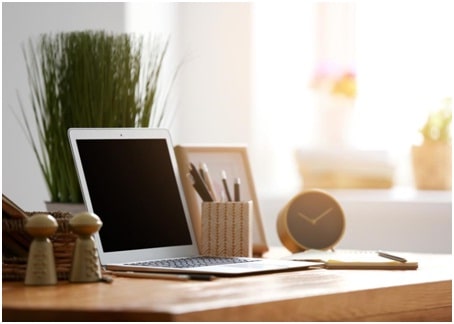
Sharing office space can be great for collaboration and productivity, but it can be a challenge to keep everything organized. Keeping the office free of clutter becomes even more difficult if there is little space for file cabinets and large shelves or if the overall office doesn’t have a separate meeting or storage room.
Fortunately, there are several easy ways to keep shared spaces clutter-free. If you’ve already maximized your space by separating rooms using color, bookcases, and decorative items but are still dealing with clutter, check out these seven creative tips for making shared office spaces worker-friendly and more productive.
- Assign and Label Storage Spaces
When multiple people use a space, they each have their own ideas and expectations of what goes where. Any communal storage space should have shelves, drawers, bins, and other segments clearly labeled to avoid disorganization.
There are multiple ways to divide things up, and the best system for each office depends on the type of work being performed. Dividing space up based on ownership may be the most effective, with each employee being allowed to organize their drawer or shelf to meet their needs.
For all systems, it’s wise to clearly label each division, even if it seems simple and easy to memorize. That way, new employees or employees from other departments don’t misplace something while trying to restock or help the team with a task. Pick the perfect printer for your office that can print labels, so you can easily reassign storage spaces as needed.
- Get Overhead Shelving
There is only so much floor space in a room and only so many ways to cram more cabinets around desks. Overhead shelves and cabinets are an excellent way to use wall space above desks.
Avoid placing shelves and cabinets too high, too low, or too close to walkways. Shelves that are too high can be hard for employees to reach, and shelves that are too low can result in bumped heads and other injuries. Small cabinets and shelves placed above desks are your best bet for balancing safety and ease of access.
- Buy Rolling Storage
Rolling storage carts and file cabinets on wheels are an easy way to keep office space flexible. Wheels allow furniture to be moved out of the way, moved closer to a desk, or shared with a colleague much more easily. The only possible downside is that another office may borrow wheeled carts or shelves without returning them. To avoid this, clearly label your storage cart with your name or the name of your department.

- Put Up Magnetic Whiteboards
While online communication and planning programs are great for some teams, groups that work in the same physical space may find physical boards to be more helpful. Whiteboards are designed for writing on, but they’re even more useful when you can easily post documents on them.
They provide a great central space for information that’s useful to the whole office and for quick brainstorming or planning. Keeping a stash of dependable printing supplies on hand can help you print and post things whenever needed.
Consider putting up one centrally located whiteboard for everyone in the space, plus smaller whiteboards above each desk. If this isn’t possible, then try to provide some other vertical magnetic space for each desk. Having this extra surface for organizing papers and reminders is priceless and can help prevent costly mistakes and missed deadlines.
- Keep a Paper Shredder Nearby
Unnecessary papers waste tons of space in any office and the clutter they create is even more obvious in a small shared office. Shredding is the safest way to dispose of sensitive documents, so making a habit out of shredding is the best way to keep office clutter under control.
Employees are much more likely to use a shredder if it’s nearby. If it’s not possible to keep it in the same room, have a “shred box” where employees can put things that need to be shredded, and shred everything in it at the end of the day. Walking back and forth to a shredder that’s in another room is a huge waste of time, so a designated box is more efficient.

- Do Monthly Purges
If at all possible, employees should clean their areas once a month and throw out any trash, unneeded documents, samples, and other clutter. While an employee’s desk may not seem important to the rest of the team, an employee’s lack of space at their desk can end up having an impact on overall office storage capacity. Encourage employees to take home any gadgets or decorations that take up too much space.
For communal shelves and cabinets, try to clean out junk at least twice a year. Sorting through who needs which supplies may require the whole team, so try to set aside some time on a Friday afternoon to get it done. Make sure to recycle printer parts and ink, as well as any other goods that require special disposal.
- Use Long-Term Storage
Sometimes offices will have documents, supplies, and equipment they can’t throw away, but won’t need to use anytime soon. Judicious use of other rooms in the office can help alleviate this clutter. If your office doesn’t have a designated storage room, you may be able to use strategically placed cabinets in hallways and meeting rooms as storage.
For very small offices, a self-storage unit may be your best option. While off-site storage can be inconvenient, it’s less of a hassle than having excessive clutter getting in the way of daily work. Monthly or quarterly, have employees organize their no-longer-needed goods and then request items to be brought over from the storage unit. It’s best to send only one or two team members to fetch things, as more people can be a drain on team efficiency.
Make Things Manageable
Designing a cohesive, inviting, and productive shared office space provides employees with a comfortable workspace that boosts creativity and job satisfaction. Keeping an office organized can be easy if you implement a system and stick to it—and encourage colleagues to do the same.
